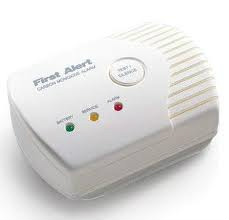
Due to inconsistent installation requirements mandated by local governments and a multitude of questions raised by property owners concerning California’s new carbon monoxide alarm law, the state Housing and Community Development Department has issued emergency regulations to bring clarify to the law.
There are a number of exceptions in the regulations concerning the installation requirements, which owners will find helpful. At the same time, the regulations clarify that the July 1, 2011, installation date for single family homes only applies to detached homes, not to condominiums. Here’s a look at some of the clarifications made through the regulations.
- All single-family detached homes (owner or tenant occupied) must be equipped with an alarm on or before July 1, 2011.
- All other residential units must be equipped with an alarm on or before January 1, 2013.
“Fossil fuel” is defined as coal, kerosene, oil, wood, fuel gases, and other petroleum or hydrocarbon products, which emit carbon monoxide as a byproduct of combustion.
An open parking garage as defined in the California Building Code or an enclosed parking garage ventilated in accordance with the California Mechanical Code shall not be deemed to be an attached garage.
Exceptions
Rental property owners who have individual dwelling units that do not contain a fuel-burning appliance or a garage attached directly to the unit, but that are located in a building with a fuel-burning appliance or a garage attached to the building, need not install a carbon monoxide alarm if:
- The unit is located more than one story above or below any story that contains a fuel-burning appliance or an attached garage; and
- The unit is not connected by duct work or ventilation shafts to any room containing a fuel-burning appliance or to an attached garage; and
- The building is equipped with a common area carbon monoxide alarm system that includes all enclosed common area spaces.
Carbon monoxide alarms must be installed and maintained in the following locations:
- Outside each separate sleeping area in the immediate vicinity of the bedrooms.
- On every level of a dwelling unit, including basements.
- Existing Dwelling Units – Carbon monoxide alarms in existing buildings may be solely battery operated or plug-in type with battery back-up in areas where no construction is taking place.
- Existing Dwelling Units Where Permit Required – When a permit is required for alterations, repairs, or additions with a total cost that exceeds $1,000, owners of existing dwellings units with a fossil fuel-burning heater or appliance, fireplace, or an attached garage shall install a carbon monoxide alarm that receives their primary power from the building wiring where such wiring is served from a commercial source and shall be equipped with a battery back-up. Alarm wiring shall be directly connected to the permanent building wiring without a disconnecting switch other than as required for overcurrent protection. The requirement shall apply only in the specific dwelling unit for which the permit was obtained.
- New Construction – New residential units with a fuel-burning appliances or an attached garage must be equipped with a carbon monoxide alarm. The alarms must receive their primary power from the building wiring where such wiring is served from a commercial source and shall be equipped with a battery back-up. Alarm wiring shall be directly connected to the permanent building wiring without a disconnecting switch other than as required for overcurrent protection.
In existing dwelling units, a carbon monoxide alarm is permitted to be solely battery operated or plug-in with a battery backup when the repairs and alterations (for which a permit is required and which exceed $1,000) do not result in the removal of wall and ceiling finishes. The same exception applies when work is done to the exterior surfaces of dwellings, such as replacement of roofing or siding, or the addition or replacement of windows or doors or the addition of a porch or deck. An exception is also provided when work is done to the plumbing or mechanical systems, electrical systems, which do not result in the removal of interior wall or ceiling finishes exposing the structure.
Interconnected Alarms – New Construction and Repairs to Existing Units
When more than one carbon monoxide alarm is required to be installed within the unit, the alarms shall be interconnected in a manner that activation of one alarm shall activate all the alarms in the individual unit.
Exceptions to Interconnected Alarms – In existing units, interconnected alarms are not required where repairs do not result in the removal of wall and ceiling finishes and no previous method for interconnection existed.
In existing units, interconnected alarms are not required where no construction is taking place.
In existing units, interconnected carbon monoxide alarms are not required where repairs or alterations are limited to the exterior surfaced of dwellings, such as the replacement of roofing or siding, or the addition or replacement of windows or doors, or the addition of a porch or deck.
In existing units, interconnected carbon monoxide alarms are not required when works is limited to the installation, alteration, or repair of plumbing or mechanical systems or the installation, alteration, or repair or electrical systems, which do not result in the removal of interior wall or ceiling finishes exposing the structure.
Installation and Maintenance
The carbon monoxide alarm must be operable at the time the tenant takes possession. A tenant is responsible for notifying the owner or owner's agent if the tenant becomes aware of an inoperable or deficient carbon monoxide alarm within his or her unit. The owner or owner's agent must correct any reported deficiencies in the carbon monoxide alarm and will not be in violation of this section for a deficient or inoperable carbon monoxide detector when he or she has not received notice of the deficiency or inoperability.
For more information about carbon monoxide alarms, go to CAA’s Website at www.caanet.org.
 RSS Feed
RSS Feed